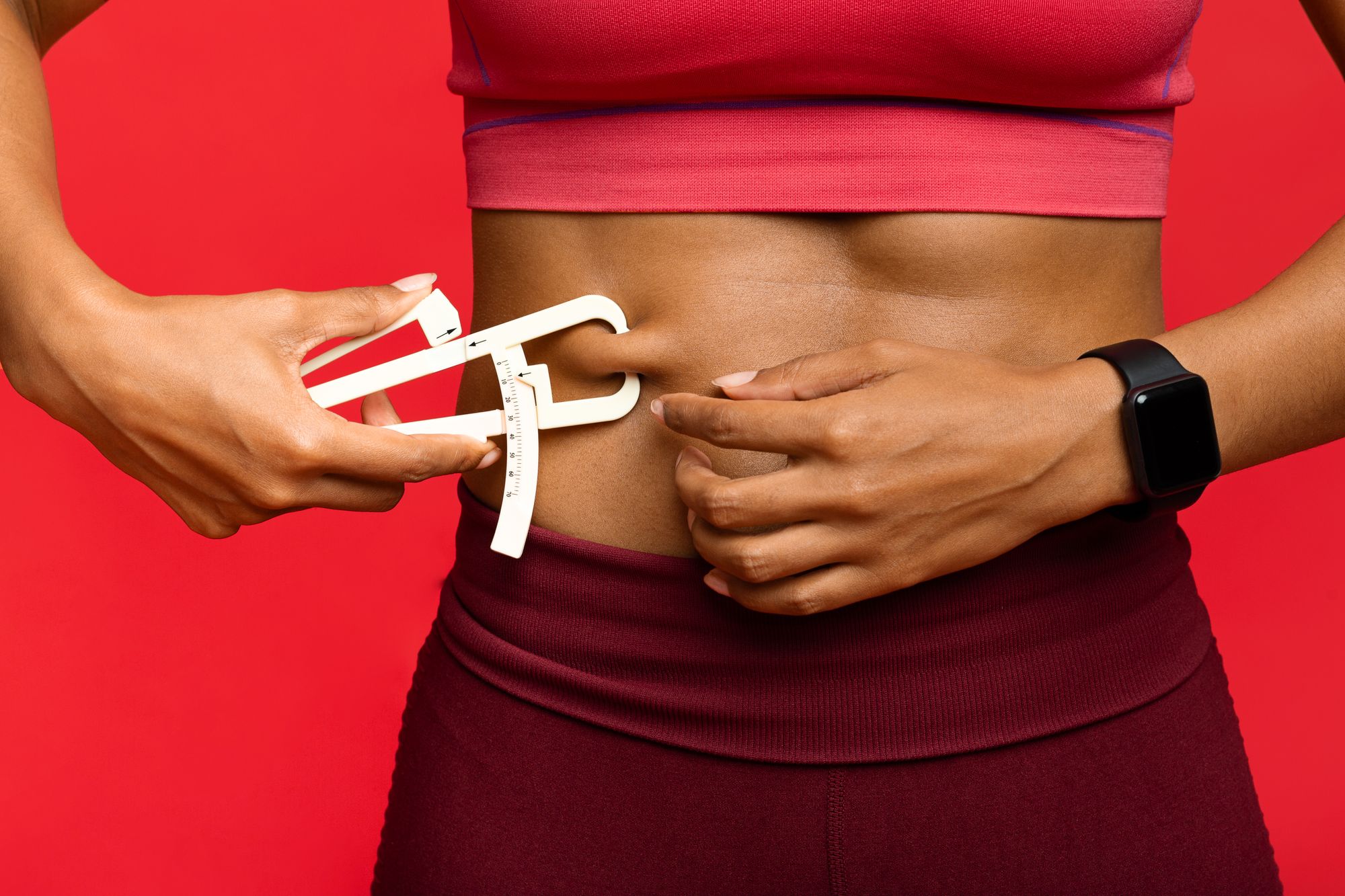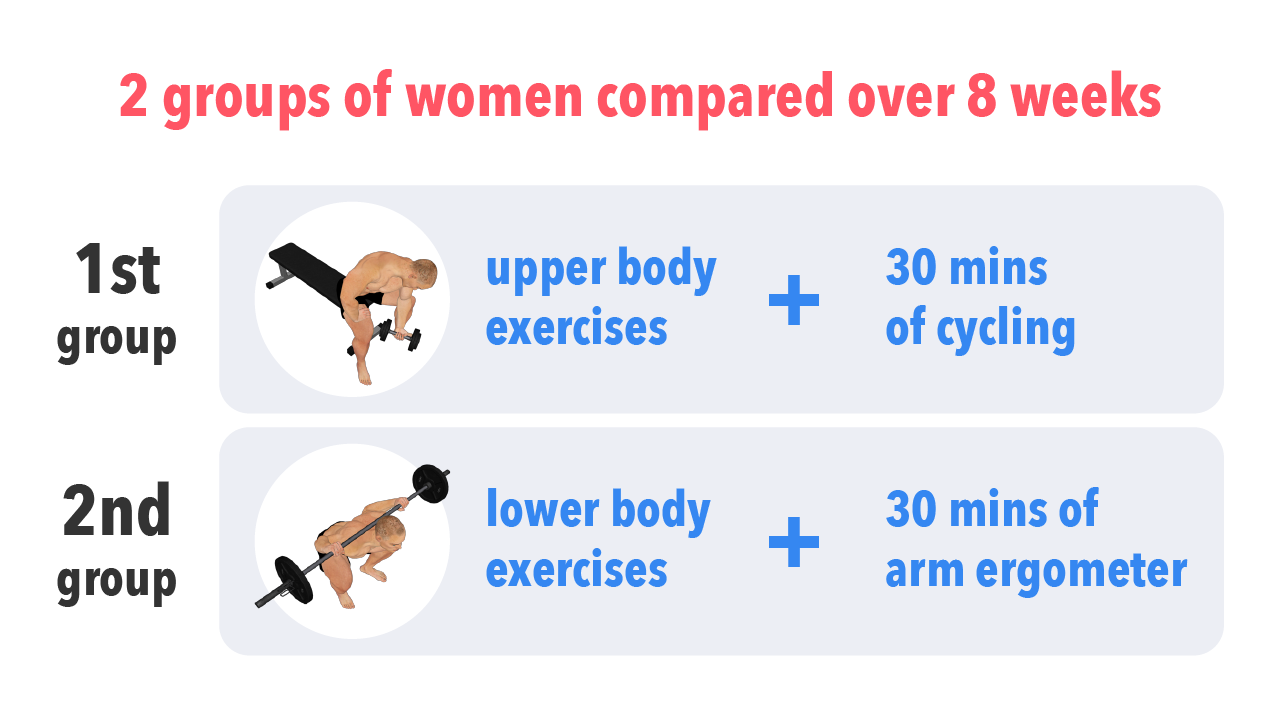Finally, The Real Truth About Spot Reduction
There's probably nothing more contentious than the idea that you can spot-reduce your fat. But... could spot reduction be a real thing? Let's explore.

There’s probably nothing quite as contentious in the fitness industry as the idea that you could selectively ‘spot-reduce’ problem areas on your body ?
There are personal trainers–who are literally screaming in their Instagram captions–saying, “No, spot-reduction is a myth. Don’t bother.” Then, you have various fitness influencers coming up with content titled, “How to get rid of your love handles/thigh fat/flabby arms.”
Which side should you believe?
Well, if you’re a regular GymStreak blog reader (we see you!), then you’d know that there’s rarely ever a straightforward answer. So, without further ado, let’s do a deep-dive into the science behind spot-reduction.
What is spot reduction?
Spot reduction is the concept that you could use a specific exercise–or a set of exercises–to burn fat in specific body areas.
An example of spot reduction is doing 100 sets of crunches every day to get rid of excess belly fat. This theory is often bought into by fitness beginners, who fixate only on working out troublesome areas rather than exercising their whole body.
But the thing is, a large body of scientific literature has essentially shown spot reduction to be a myth.
The spot-reduction of fat mass (i.e. the loss of fat around the muscles being exercised) does not occur to any greater extent than achieved by a different form of exercise, resulting in similar caloric expenditure.
In other words, you’d lose that excess belly fat/thigh fat/arm fat by simply increasing your calorie burn.
Worse still, a 2015 study published in the Journal of Manipulative & Physiological Therapeutics found that individuals who’d undergone resistance training of the abdominals did not experience enhanced fat loss results from the region–compared to dietary intervention alone.
But when fitness professionals were hammering in the final nail into the spot-reduction coffin… A new study comes out to show that it just might be possible.
Did this study ‘prove’ spot reduction is possible?
In the study, researchers randomly allocated 16 physically inactive women to two groups to complete an 8-week resistance program. Here's how the two groups differed:
- First group – Training sessions consisted of upper body resistance exercises followed by 30-minute cycling at 50% VO2 max.
- Second group – Training sessions consisted of lower-body resistance exercises followed by 30 minutes on an arm ergometer (something like an arm crank).

At the end of 8 weeks, researchers assessed the participants' regional body composition by DEXA and skinfold measures.
And what did the researchers find?
Well, they found that the women in the first group (focused on upper body training) experienced relatively more fat loss from the upper body. The opposite held: women from the second group, who’d only trained their lower body, experienced more fat loss from the lower body.
To make the results even more convincing, participants from both groups lost a significant amount of total body fat. The total body fat loss was nearly identical in both groups.
Okay… What a rollercoaster ride of emotions. Does this mean that spot reduction is real–and that you need to do cardio immediately after heavy sets of hip thrusts and cable crunches?
Not really.
Given that this is just one study–amongst all available literature–that shows the possibility of spot reduction, we should be cautious about accepting its findings as fact. Another issue with the study is its small sample size cohort.
Let's be honest. 16 individuals aren't likely to capture the nuances of the general population.
What this means for you
If you’ve stuck with the article till this point, you likely only have one concern on your mind: “How does this apply to me?”
Ultimately, there is a chance that spot reduction may be real. Despite its poor design, there's always the possibility that its findings are valid. That means you could try out its protocol (i.e. immediately perform cardio after weightlifting) to see how it works out for you.
Although… There are a few crucial caveats you'll need to keep in mind:
Eat in a calorie deficit
Here’s the truth. Spot reduction, which is essentially the same as fat loss, is impossible to achieve if you’re not eating in a calorie deficit.
100 sets of crunches are not going to give you ripped abs without enough overall body fat loss. And no amount of sprinting is going to get rid of your thigh fat if you’re consistently eating in a calorie surplus.
So, make sure you calculate what your maintenance calories are, then eat in a deficit.
Do high-intensity work
To increase your calorie-burn (so you create a larger calorie deficit), you’ll want to do more high-intensity work.
That typically means focusing on compound movements, which burn more calories than isolation work.
For instance: if you wish to target your thigh fat, you'd want to focus more on squats and deadlifts instead of leg curls and leg extensions.
Be aware of concurrent training's drawbacks
Just so you know, there is a phenomenon known as the ‘interference effect’ that occurs when pairing strength and endurance training together, one right after the other (which is also known as concurrent training).
What happens is that endurance training signaling stunts muscle growth.
That means you'd see less gains than if you were to do your cardio sessions separately from your lifting sessions. So, if your fitness goal is to maximize muscle growth, then following spot reduction protocol may not be suitable for you.
You’ll need to weigh the pros and cons–and decide if the sacrifices you’ll make on potential gains are worth it.
Consistently training hard may give you better results
It’s human nature to want a quick and easy way to lose fat, especially in troublesome areas like the belly, hips, and thighs.
But even in the study that's highlighted the possibility of spot-reduction, one thing's clear.
You still need to put in the hard work to see results.
All participants had to show up and go through with the training sessions consistently.
Instead of fixating on spot reduction, it may be more worthwhile for you to focus on showing up for your sessions consistently. Paired with the right nutrition, there are no doubts that you'll see fat loss from your desired body areas.
Struggling with working out consistently? Then GymStreak is perfect for you. As an AI-powered trainer app that allows you to log your workouts, this personal-trainer-in-your-pocket app keeps you accountable to your fitness goals. What are you waiting for? Let's get your dream physique now!
Get GymStreakReferences
Fyfe, J. J., Bishop, D. J., & Stepto, N. K. (2014). Interference between concurrent resistance and endurance exercise: Molecular bases and the role of individual training variables. Sports Medicine (Auckland, N.Z.), 44(6), 743–762. https://doi.org/10.1007/s40279-014-0162-1
Gwinup, G., Chelvam, R., & Steinberg, T. (1971). Thickness of Subcutaneous Fat and Activity of Underlying Muscles. Annals of Internal Medicine, 74(3), 408–411. https://doi.org/10.7326/0003-4819-74-3-408
Katch, F. I., Clarkson, P. M., Kroll, W., McBride, T., & Wilcox, A. (1984). Effects of Sit up Exercise Training on Adipose Cell Size and Adiposity. Research Quarterly for Exercise and Sport, 55(3), 242–247. https://doi.org/10.1080/02701367.1984.10609359
Kordi, R., Dehghani, S., Noormohammadpour, P., Rostami, M., & Mansournia, M. A. (2015). Effect of abdominal resistance exercise on abdominal subcutaneous fat of obese women: A randomized controlled trial using ultrasound imaging assessments. Journal of Manipulative and Physiological Therapeutics, 38(3), 203–209. https://doi.org/10.1016/j.jmpt.2014.12.004
Krotkiewski, M., Aniansson, A., Grimby, G., Björntorp, P., & Sjöström, L. (1979). The effect of unilateral isokinetic strength training on local adipose and muscle tissue morphology, thickness, and enzymes. European Journal of Applied Physiology and Occupational Physiology, 42(4), 271–281. https://doi.org/10.1007/BF00423297
Scotto di Palumbo, A., Guerra, E., Orlandi, C., Bazzucchi, I., & Sacchetti, M. (2017). Effect of combined resistance and endurance exercise training on regional fat loss. The Journal of Sports Medicine and Physical Fitness, 57(6), 794–801. https://doi.org/10.23736/S0022-4707.16.06358-1

